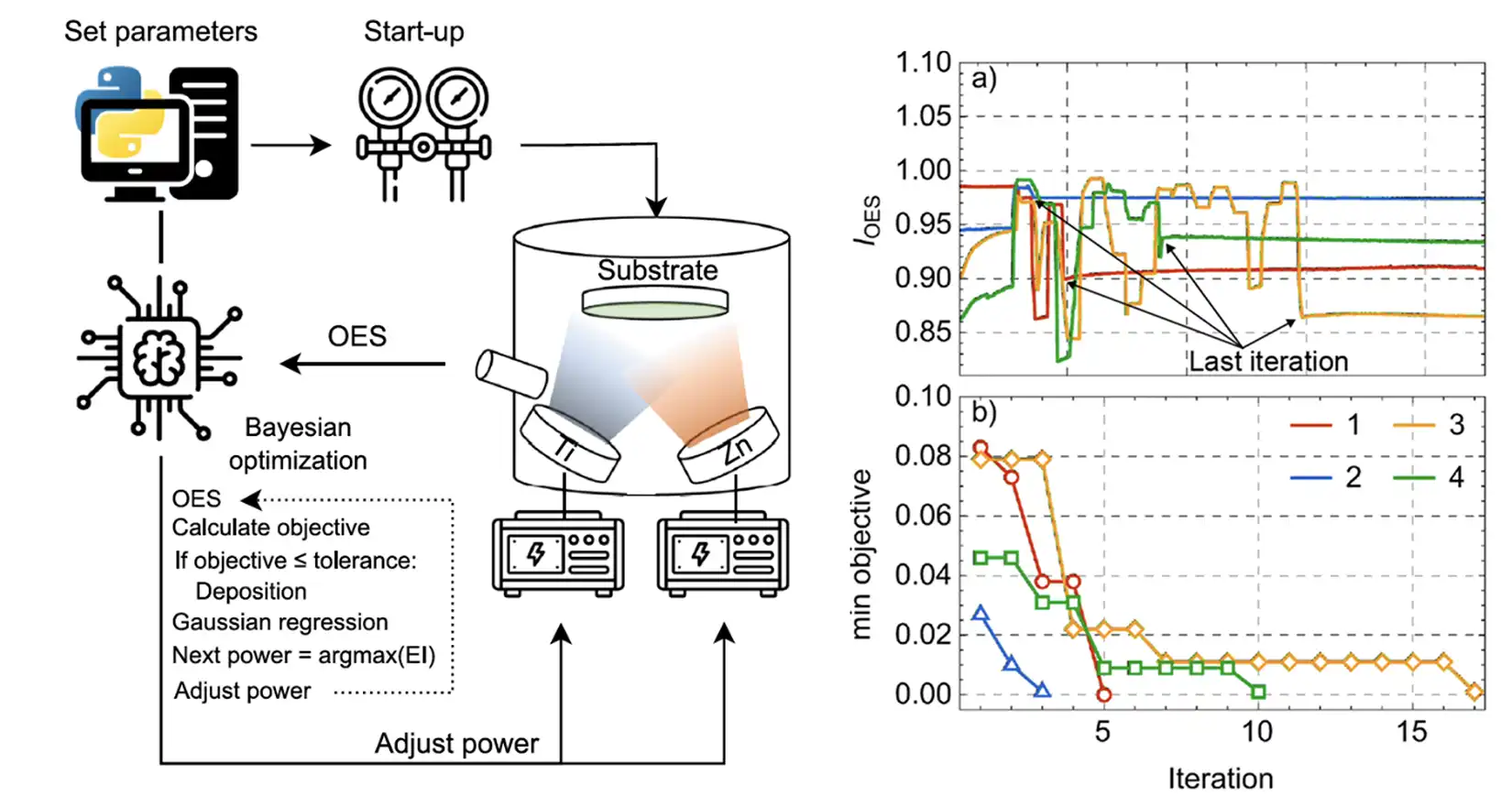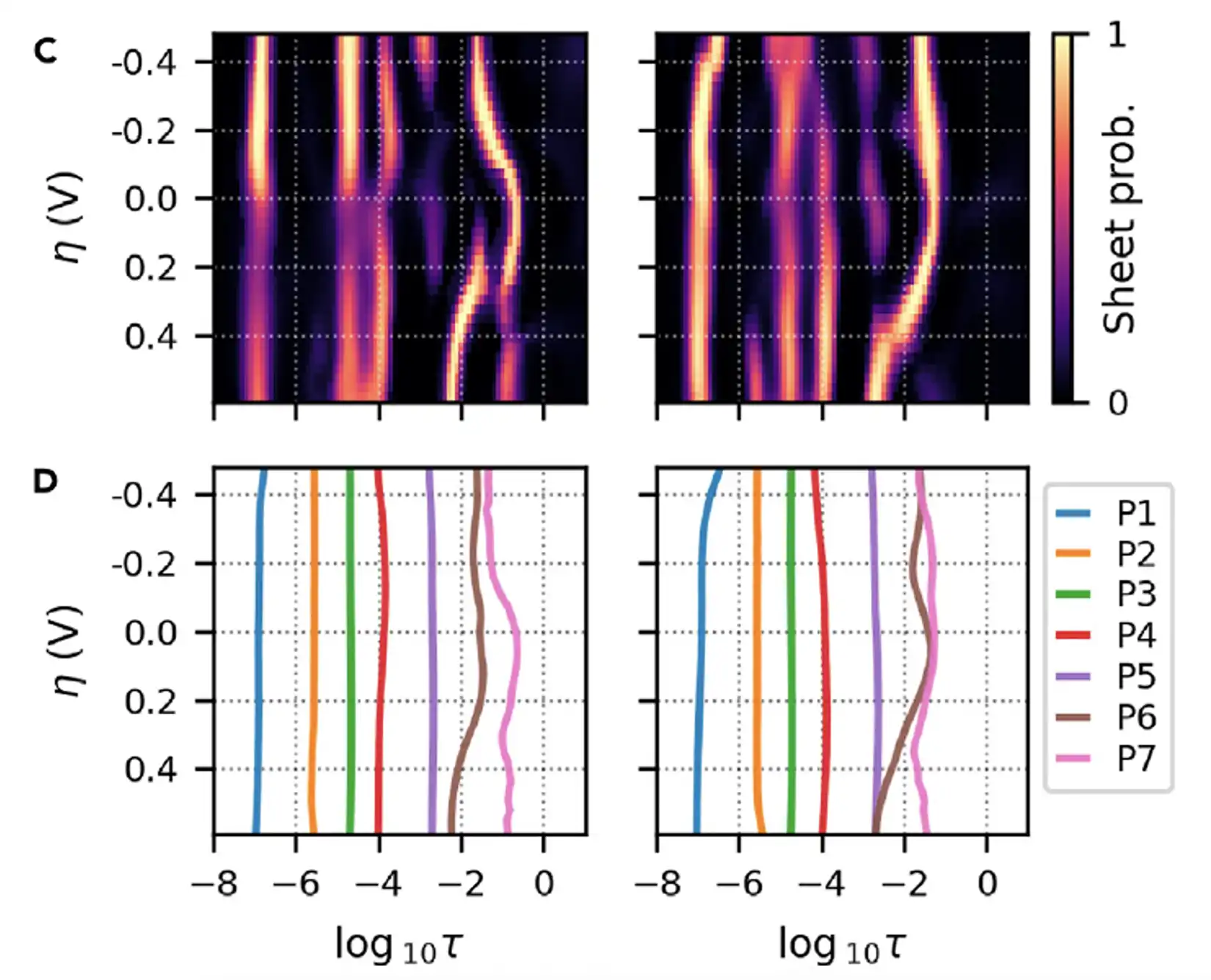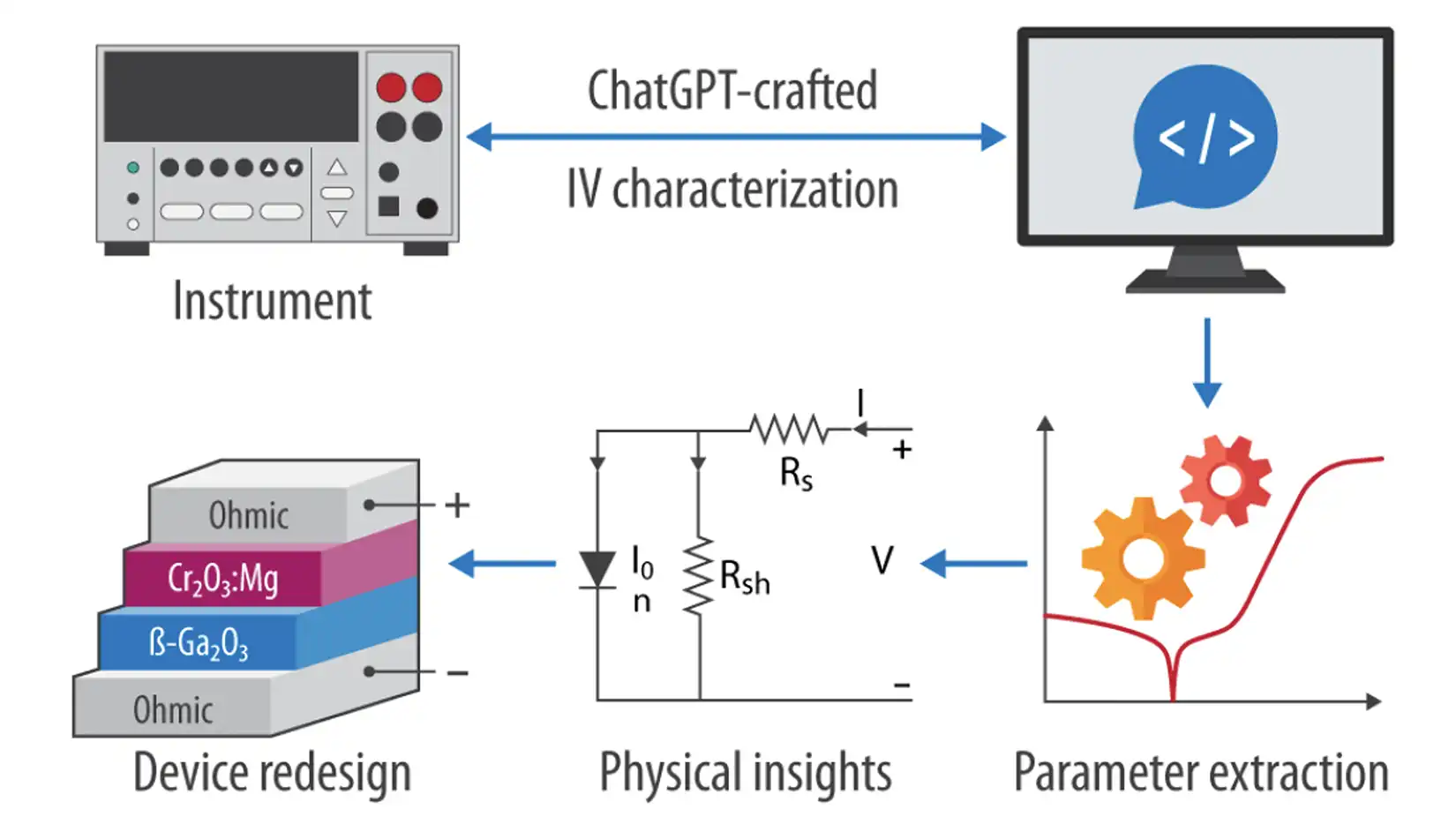Autonomous Experimentation
NLR's autonomous experimentation capabilities to support materials discovery and design include autonomous synthesis, autonomous characterization, and artificial intelligence (AI)-enhanced software development.
Autonomous experimentation involves fully automated instruments controlled by AI algorithms with input from measurements in a closed loop. Autonomy can be applied to synthesis instruments, with the goal to arrive at the desired material outcomes by algorithmic navigation of processing conditions. Autonomous experimentation can also be used for characterization instruments to accelerate the rate at which data is collected by sampling only part of the combinatorially larger space of experimental conditions.
We use large language models (e.g., ChatGPT, Llama) to assist in developing software for control and automation of the instruments needed for autonomous experimentation.
Autonomous Synthesis
We have implemented autonomous sputter deposition of Zn-Ti-N thin-film nitrides, where the targeted materials composition was achieved by Bayesian optimization with in-situ feedback of optical plasma emission measurement. We have also demonstrated rapid screening of precursor fluxes and substrate temperature during molecular beam epitaxy of monoclinic (In,Ga)2O3 alloys, using cyclic growth and etching of these materials.
For more information, see:
Autonomous Sputter Synthesis of Thin Film Nitrides With Composition Controlled by Bayesian Optimization of Optical Plasma Emission, APL Materials (2023)
Rapid Screening of Molecular Beam Epitaxy Conditions for Monoclinic (InxGa1−x)2O3 Alloys, Journal of Materials Chemistry A (2024).

Autonomous Characterization
Our work on autonomous characterization focuses on implementing AI-driven control to accelerate the measurements that otherwise take a very long time. Examples include temperature- and pressure-dependent electrochemical impedance spectroscopy measurements and data analysis, as well as temperature- and time-dependent measurements of oxide semiconductor gas sensors performance and reliability.
For more information, see:
Rapid Mapping of Electrochemical Processes in Energy-Conversion Devices, Joule (2024)
From Text to Test: AI-Generated Control Software for Materials Science Instruments, Digital Discovery (2024).

Artificial Intelligence-Enhanced Software Development
To help democratize autonomous experimentation and further accelerate materials research advances, we released AI-crafted control code for automating scientific instruments. For example, we demonstrated how to swiftly establish a Python-based control module and graphical user interface for the Keithley 2400 electrical source measure unit solely through interactions with ChatGPT-4, and we released the resulting code as well as prompt templates and template files to the scientific community.
Download from GitHub: Keithley 2400 software and IV parameter extraction algorithm.
For more information, see From Text to Test: AI-Generated Control Software for Materials Science Instruments, Digital Discovery (2024).

Research Collaborators
Steven Spurgeon – Autonomous electron microscopy (NLR)
Hilary Egan – Computational sciences of AI/AE (NLR)
Contacts
Share
Last Updated Dec. 6, 2025
